 |
 |
Our enthusiastic and extremely knowledgeable perennials team is here to answer your questions and help you choose the best perennials for your situation. There’s always something in bloom for sun, shade, butterflies, birds or deer resistance as well as a variety of bulbs for your space.
Stroll through our time-tested favorites and introduce yourself to the newest varieties. We garden with perennials too; we love them and it shows!
|
87 found, showing page 4 of 6

Height: 5 feet
Spread: 3 feet
Sunlight: full sun partial shade
Hardiness Zone: 2b
Ornamental Features:
Switch Grass features airy plumes of rose flowers rising above the foliage in mid summer. The brick red seed heads are carried on showy plumes displayed in abundance from late summer to mid fall. Its grassy leaves are green in color. The foliage often turns yellow in fall.
Landscape Attributes:
Switch Grass is an herbaceous perennial grass with an upright spreading habit of growth. Its relatively fine texture sets it apart from other garden plants with less refined foliage.
This is a relatively low maintenance plant, and is best cut back to the ground in late winter before active growth resumes. It has no significant negative characteristics.
Switch Grass is recommended for the following landscape applications:
- Accent
- Mass Planting
- General Garden Use
Planting & Growing:
Switch Grass will grow to be about 4 feet tall at maturity, with a spread of 3 feet. It tends to be leggy, with a typical clearance of 1 foot from the ground, and should be underplanted with lower-growing perennials. It grows at a medium rate, and under ideal conditions can be expected to live for approximately 15 years. As an herbaceous perennial, this plant will usually die back to the crown each winter, and will regrow from the base each spring. Be careful not to disturb the crown in late winter when it may not be readily seen!
This plant does best in full sun to partial shade. It is very adaptable to both dry and moist locations, and should do just fine under typical garden conditions. It is considered to be drought-tolerant, and thus makes an ideal choice for a low-water garden or xeriscape application. It is not particular as to soil type, but has a definite preference for alkaline soils, and is able to handle environmental salt. It is somewhat tolerant of urban pollution. This species is native to parts of North America. It can be propagated by division.
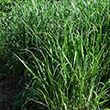
Green foliage. Pink blooms. Upright clumping. Native. USDA 5-9
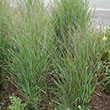
Red tipped foliage. Red blooms. Compact clumping. Native. USDA 5-9
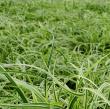
Plant Height: 12 inches
Flower Height: 18 inches
Spread: 18 inches
Sunlight: full sun, partial shade, full shade
Hardiness Zone: 4b
Other Names: Japanese Grass Sedge, Rush
Description:
Grown for delicate ornamental light-green and cream variegated foliage; great in a moist border in shade or sun, does not like to dry out
Ornamental Features:
Silver Sceptre Variegated Japanese Sedge is primarily valued in the garden for its cascading habit of growth. Its attractive grassy leaves remain light green in color with distinctive creamy white edges throughout the year.
Landscape Attributes:
Silver Sceptre Variegated Japanese Sedge is an herbaceous evergreen perennial grass with a shapely form and gracefully arching stems. Its relatively fine texture sets it apart from other garden plants with less refined foliage.
This is a relatively low maintenance plant, and is best cleaned up in early spring before it resumes active growth for the season. Deer don't particularly care for this plant and will usually leave it alone in favor of tastier treats. It has no significant negative characteristics.
Silver Sceptre Variegated Japanese Sedge is recommended for the following landscape applications:
- Mass Planting
- Border Edging
- General Garden Use
- Groundcover
- Naturalizing And Woodland Gardens
- Container Planting
Planting & Growing:
Silver Sceptre Variegated Japanese Sedge will grow to be about 12 inches tall at maturity extending to 18 inches tall with the flowers, with a spread of 18 inches. Its foliage tends to remain dense right to the ground, not requiring facer plants in front. It grows at a medium rate, and under ideal conditions can be expected to live for approximately 10 years. As an evegreen perennial, this plant will typically keep its form and foliage year-round.
This plant performs well in both full sun and full shade. It prefers to grow in moist to wet soil, and will even tolerate some standing water. It is not particular as to soil type or pH. It is somewhat tolerant of urban pollution. This is a selected variety of a species not originally from North America. It can be propagated by division; however, as a cultivated variety, be aware that it may be subject to certain restrictions or prohibitions on propagation.
Silver Sceptre Variegated Japanese Sedge is a fine choice for the garden, but it is also a good selection for planting in outdoor pots and containers. It is often used as a 'filler' in the 'spiller-thriller-filler' container combination, providing a canvas of foliage against which the thriller plants stand out. Note that when growing plants in outdoor containers and baskets, they may require more frequent waterings than they would in the yard or garden.

Dense, clumping, variegated foliage. Low-maintenance. USDA 5-9
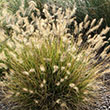
White blooms. Graceful, spreading clump. Deep green leaves. Tolerates black walnut, Dry & wet soils. USDA 5-9
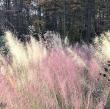
Airy pink blooms. Fine, threadlike foliage. Native. USDA 5-9

Red tipped foliage. Red blooms. Compact clumping. Native. USDA 5-9
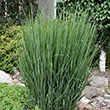
Prefers average, medium to wet soils; tolerant of poor soils. Moisture and drought tollerant. Golden blooms in fall. Strong, upright, clumping habit. USDA 5-9
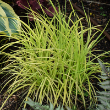
Plant Height: 18 inches
Flower Height: 24 inches
Spread: 18 inches
Sunlight: full sun, partial shade
Hardiness Zone: 4b
Other Names: Tufted Sedge, Bowles' Golden Grass
Description:
This sedge has spectacular bright gold-yellow foliage with thin green margins and is taller than most others; an excellent choice as a highlight plant for a shade or water garden; moisture loving and needs to be constantly wet or moist to thrive
Ornamental Features:
Bowles' Golden Sedge is primarily valued in the garden for its cascading habit of growth. Its attractive grassy leaves emerge lime green in spring, turning yellow in color with prominent green stripes. The foliage often turns brown in fall. The tan seed heads are carried on plumes in late summer.
Landscape Attributes:
Bowles' Golden Sedge is an herbaceous perennial grass with a shapely form and gracefully arching stems. It brings an extremely fine and delicate texture to the garden composition and should be used to full effect.
This is a relatively low maintenance plant, and is best cleaned up in early spring before it resumes active growth for the season. It has no significant negative characteristics.
Bowles' Golden Sedge is recommended for the following landscape applications:
- Mass Planting
- Border Edging
- General Garden Use
- Groundcover
- Container Planting
- Bog Gardens
Planting & Growing:
Bowles' Golden Sedge will grow to be about 18 inches tall at maturity extending to 24 inches tall with the flowers, with a spread of 18 inches. Its foliage tends to remain dense right to the ground, not requiring facer plants in front. It grows at a slow rate, and under ideal conditions can be expected to live for approximately 10 years. As an herbaceous perennial, this plant will usually die back to the crown each winter, and will regrow from the base each spring. Be careful not to disturb the crown in late winter when it may not be readily seen!
This plant does best in full sun to partial shade. It prefers to grow in moist to wet soil, and will even tolerate some standing water. It is not particular as to soil type or pH. It is somewhat tolerant of urban pollution. Consider applying a thick mulch around the root zone in both summer and winter to conserve soil moisture and protect it in exposed locations or colder microclimates. This is a selected variety of a species not originally from North America. It can be propagated by division; however, as a cultivated variety, be aware that it may be subject to certain restrictions or prohibitions on propagation.
Bowles' Golden Sedge is a fine choice for the garden, but it is also a good selection for planting in outdoor pots and containers. It can be used either as 'filler' or as a 'thriller' in the 'spiller-thriller-filler' container combination, depending on the height and form of the other plants used in the container planting. Note that when growing plants in outdoor containers and baskets, they may require more frequent waterings than they would in the yard or garden.
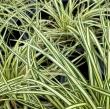
'Evergold' Japanese Sedge | Bright creamy yellow-striped, narrow leaves makes this a wonderful accent. Variegated. Evergreen. Tolerates moist soils. Naturalizing. USDA 5-9
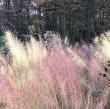
Airy pink blooms. Fine, threadlike foliage. Native. USDA 5-9
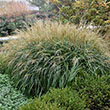
Pinkish blooms. Upright clumping grass. Self-seeding. USDA 5-9
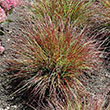
Bright red accent on blades. Compact. Tan seed heads. USDA 5-9
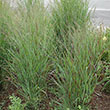
Red tipped foliage. Red blooms. Compact clumping. Native. USDA 5-9
87 found, showing page 4 of 6











